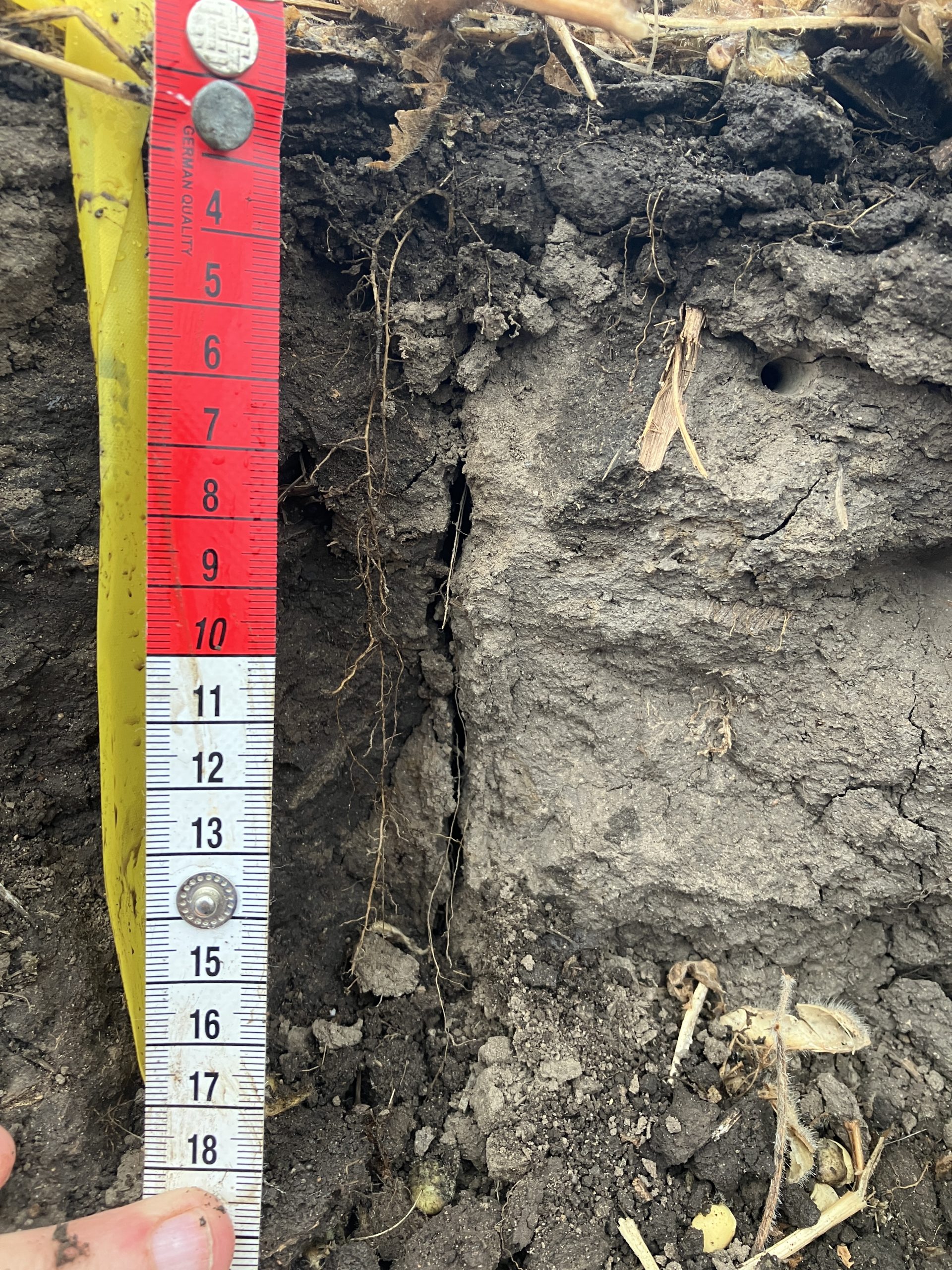Soil Health Evaluation
Amber Anderson; Lee Burras; Rich Pope; and Erin Smeltzly

Soil health is generally defined as the ability of a soil to function. We rely on soils to perform a variety of different functions. Filtering and storing water, storing or recycling nutrients, breaking down wastes or harmful materials, or supporting buildings are just a few. We will primarily focus on plant growth and water indicators. Though often challenging to evaluate in the field, generally, soils with well-functioning microbial communities should have healthy roots, stable aggregates (stable pore space rather than compaction), and ideally, a darker A horizon. An additional indicator of a healthy soil would be channels and castings from macro faunal activity, particularly from earthworm activity.
Practices to improve soil health for plant growth include encouraging more root growth in the soil throughout the year, decreasing tillage or disturbance, and other practices to limit soil erosion. A full soil health assessment addresses a variety of physical, chemical, and biological indicators. However, we will use the following chart to begin to assess soil health, as these properties are observable quickly in the field.
| Category | Rooting or Compaction | Aggregate Stability | Structure of A |
|---|---|---|---|
| A: Healthy functioning, maintain or enhance practices | Roots extend well throughout A horizon, rooting pattern not significantly impacted by compaction | Stable aggregates; remain after 5 minutes when dropped in water | Granular, most particles are in similar sized aggregates leading to significant pore space |
| B: Modifications to the system needed | Compaction visible in the surface, root pattern altered | Aggregates somewhat stable in water, between 1 and 5 minutes | Decreased pore space, blocky structure |
| C: Significant changes to the system needed | Compaction significant enough to stunt roots, roots growing sideways around a compaction layer | Aggregates disintegrates quickly (under 1 minutes) when dropped in water | Appears platy or layered due to compaction, lacking pore space sufficient for water movement, soil feels dense |
Soil Health Introduction
Watch the video here: https://youtu.be/ZTgm1v8kDBg
Rooting Structures
Watch the video here: https://youtu.be/v__yuXVIZqk
Aggregate Stability
Watch the video here: https://youtu.be/4tjrabSi5mc
Structure and Color of the A Horizon
Watch the video here: https://youtu.be/LaR-DHqeTHQ
- Soil health is defined as the ability of a soil to function.
- Health soils have well-functioning microbial communities, stable aggregates, dark A horizons, and cannels and castings from macro faunal activity.
- Practices to improve soil health include promoting root growth year-round, decreasing tillage or disturbance, and other practices to limit soil erosion.

